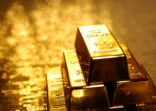“We believe we are now in the recovery and up-cycle phase for gold equities investing,” said George Cheveley, who manages the $463.3m Investec Global Gold Fund, at a recent media briefing.
“Companies are focused on cutting costs, improving returns and cash flow and strengthening balance sheets. Management teams also have a mandate to return cash [to shareholders] through dividends and buybacks, and maintain low capex budgets,” he said.
Moreover, “improving commodity prices should support cash flow generation for producers”.
Cheveley’s fund invests predominantly in gold miners, although it also has allocations to physical silver and platinum. Three-quarters of the mining companies its holds are listed in Canada or Australia, and include major weightings in Barrick Gold, Newcrest Mining and Agnico Eagle Mines.
The fund has four-star rating by Morningstar, but it has struggled during the past three years. It has posted a negative 11.79% return since 20 May 2016, while broad equity market indices have achieved strong cumulative returns, despite the turmoil in financial markets throughout the second half of last year.
For instance, the S&P 500 has returned 47.02% and the MSCI World index returned 38.01% over the last three years, according to FE Analytics.
The fund (and the gold mining sector as represented by the FTSE Gold Mines index – which the fund incidentally tracks quite closely in performance) also has a turbulent recent history. Its annualised volatility over three years is 28.5%, similar to the FTSE index (28.13%), but much higher than the S&P 500 (12.65%), the MSCI World (11.32%) and the commodity fund sector average (18.28%), according to FE Analytics.
Nevertheless, Cheveley argued that “concerns over global equity markets have boosted gold equities”. That looks to have been the case in the final quarter of last year, with gold mining stocks rallying while major broad market indices fell. But there has been a reversal of fortune since the US Federal Reserve’s shift to a dovish monetary policy stance at the start of the year (see chart below).
Comparative recent performance of NYSE Arca Gold Miners Index

The relative under-performance is curious, because most gold bugs agree that the main determinant of the yellow metal’s price trend is the direction of the dollar and US interest rates.
As Ned Naylor-Leyland, manager of Merian’s gold and silver fund, told FSA in February: “The recent dovish signals by the Federal Reserve chairman should encourage gold buyers concerned that inflation will rise and hence real interest rates fall – which should lead to a weaker dollar.
“Contrary to a common belief, the price of gold is not driven by physical scarcity or abundance, or whether or not the gold jewelry is fashionable. Instead, the key determinant is the market’s expectations about the US dollar and the trajectory of real (that is, inflation adjusted) interest rates,” explained Naylor-Leyland.
As Cheveley pointed out, “gold offers no yield and thus is more attractive, relative to other safe havens, in an environment of low to negative interest rates”.
The most recent annual survey by the London Bullion Market Association, a standards-setting body for the gold industry, found that the average forecast by the 30 analysts polled called for a modest 1.8% gain in the gold price this year. Two-thirds of the analysts expected gold reaching or surpassing the $1,400 mark at some point during the year, compared with a current price of $1,275.3 an ounce.
The price is more or less flat for the year so far, although it spiked above $1,340 in mid-February amid indications of a slowing US economy that prompted a weaker dollar.
However, for the time being, it is unclear what will drive the performance of a fund invested in gold company equities, rather than the physical metal: the direction of global equity markets, or the the direction of the dollar and US interest rates.
Comparative performance of Investec Global Gold Fund

















